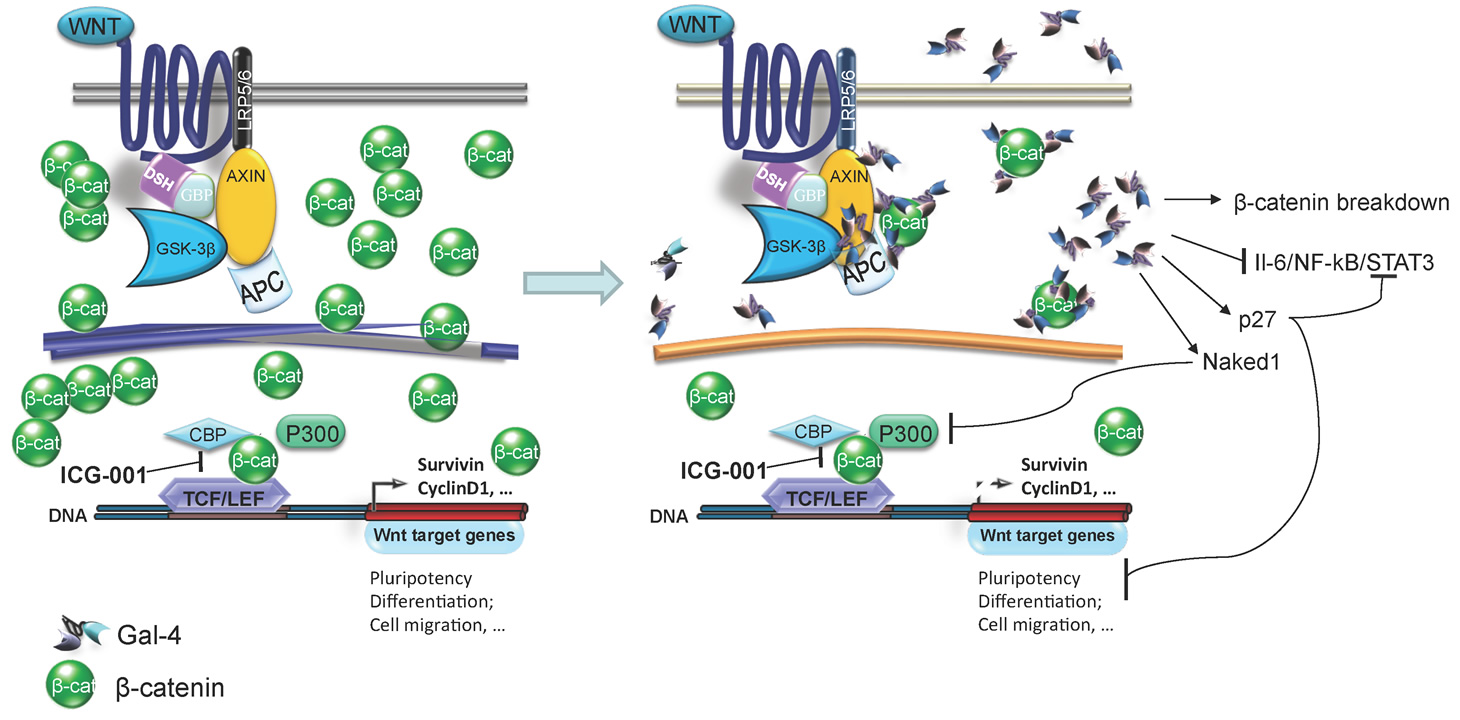Galectin-4 expression is associated with reduced lymph node metastasis and modulation of Wnt/β-catenin signalling in pancreatic adenocarcinoma
Maftouh M, Belo AI, Avan A, Funel N, Peters GJ, Giovannetti E,* van Die I.*
Oncotarget 2014; 30;5(14):5335-49 (*these authors equally contributed to the study)
Abstract
Galectin-4 (Gal-4) has been recently identified as a pivotal factor in the migratory capabilities of a set of defined pancreatic ductal adenocarcinoma (PDAC) cell lines using zebrafish as a model system. Here we evaluated the expression of Gal-4 in PDAC tissues selected according to their lymph node metastatic status (N0 vs. N1), and investigated the therapeutic potential of targeting the cross-link with the Wnt signaling pathway in primary PDAC cells. Analysis of Gal-4 expression in PDACs showed high expression of Gal-4 in 80% of patients without lymph node metastasis, whereas 70% of patients with lymph node metastases had low Gal-4 expression. Accordingly, in primary PDAC cells high Gal-4 expression was negatively associated with migratory and invasive ability in vitro and in vivo.
Knockdown of Gal-4 in primary PDAC cells with high Gal-4 expression resulted in significant increase of invasion (40%) and migration (50%, P<0.05), whereas enforced expression of Gal-4 in primary cells with low Gal-4 expression reduced the migratory and invasive behavior compared to the control cells. Gal-4 markedly reduces β-catenin levels in the cell, counteracting the function of Wnt signaling, as was assessed by down-regulation of survivin and cyclin D1. Furthermore, Gal-4 sensitizes PDAC cells to the Wnt inhibitor ICG-001, which interferes with the interaction between CREB binding protein (CBP) and β-catenin. Collectively, our data suggest that Gal-4 lowers the levels of cytoplasmic β-catenin, which may lead to lowered availability of nuclear β-catenin, and consequently diminished levels of nuclear CBP-β-catenin complex and reduced activation of the Wnt target genes. Our findings provide novel insights into the role of Gal-4 in PDAC migration and invasion, and support the analysis of Gal-4 for rational targeting of Wnt/β-catenin signaling in the treatment of PDAC.
Link: www.ncbi.nlm.nih.gov/pubmed/24977327
Free full PDF text: click here

Legend: Model for Gal-4 effects on canonical Wnt signalling. Upon activation of the canonical Wnt signaling pathway, Frizzled (dark blue line) and low-density lipoprotein receptor-related protein 5/6 (LRP5/6) activate the protein Dishevelled (DSH), leading to Axin recruitment. The β-catenin (β-cat) “destruction complex”, composed of the proteins Axin, adenomatous polyposis coli (APC), glycogen synthase kinase-3 (GSK-3β) and GSK3-binding protein (GBP), is not able to phosphorylate β-cat, resulting in its accumulation and translocation into the nucleus. Interaction of nuclear β-cat with CREB-binding protein (CBP) leads to an active transcriptional complex for downstream target genes by binding to T-cell factor (TCF)- and lymphoid enhancer-binding protein (LEF)-family transcription factors. The Wnt inhibitor small molecule ICG-001 specifically binds to CBP thereby disrupting the interaction of CBP with β-cat. In the presence of Gal-4, overall β-cat levels in the cell are decreased and thus less ICG-001 is required to disrupt the interaction of CBP with β-catenin. Gal-4 can bind to axin, β-cat and APC.




